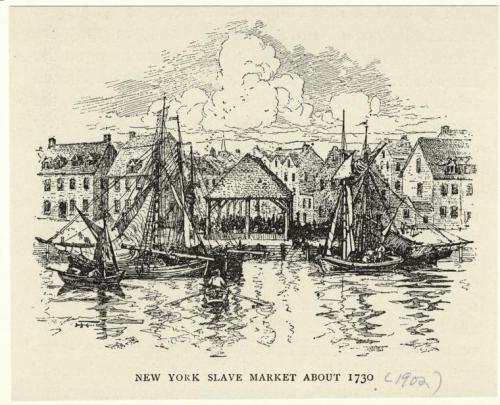July 4, 1827: Slavery completely abolished in New York In America, July 4th is synonymous with freed
July 4, 1827: Slavery completely abolished in New York In America, July 4th is synonymous with freedom. But there are two things people tend to forget when they’re celebrating America’s independence: one, that the founding fathers were famously mum on the subject of slavery (and that many earned their wealth and status on the backs of slaves), and that, through the 18th century, most Northern colonies/states had slavery. In New Amsterdam, the first slaves were brought over in 1624 by the Dutch East India trading company. The men (and handful of women) brought over in these early years, when New Amsterdam was just a small port village, could be credited with the intense manual labor - clearing of trees, construction of homes, businesses and ships, paving of roads - that helped turn New Amsterdam into a size-able town by the time it became New York. Under the Dutch, slaves, most of whom came from Angola, were treated as commodities. Many slaves had a half-freedom, which allowed them to earn and keep some wages. Some were able to save up enough money to free themselves or their family members. Free Africans owned homes and businesses, and an enterprising few gained considerable influence and wealth. Under the English, most slaves either worked domestically or in assorted businesses, from stores and taverns to the docks. New York played a large role in the revolutionary war. Its growing affluence made it a good target, and the British occupied the city for much of the war. Slaves flocked to fight for both sides with the promise of freedom. In years following the war, slavery continued, but became less profitable as the population of immigrants and poor whites (who were willing to work for meager wages) increased. By 1799, pressure from such groups as the New York Manumission Society (established in 1785 by Quakers) had the New York senate passing a bill for gradual emancipation. Slaves born before July 4th, 1799 remained slaves, but those born after that date would be freed in their twenties. Many slave owners, in an attempt to squeeze the last bit of profit out of their human chattel, got to work selling their slaves down south under the guise of indentured servitude. Slaves and free blacks were sometimes kidnapped and sold out of state by criminals, while others were sold by signing faulty indenture contracts. The Manumission Society rescued dozens of free blacks from these devious schemes, but census figures show that the black population of New York dropped severely after 1800. Taking note of the actions of slaveholders, in 1817 Governor Daniel D. Tompkins proposed that all slaves should be freed unconditionally by “some future day, not more remote than the 4th day of July, 1827." He argued that, in a decade, slaves would no longer be profitable to their owners, anyway. The measure passed. Freedom was not without its restrictions: The right of black men to vote was taken away in 1815. Blacks were viewed by immigrants and poor white as competition, and their ire sometimes grew violent. Many also found themselves pushed out of skilled labor and relegated to the most mundane and low-paying jobs. But July 4th, 1827 certainly took an enormous step towards ensuring that the meaning behind July 4th was applicable to all. More here: [x] [x] -- source link
#history#july 4th#american history#slavery#new york

